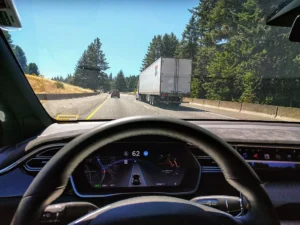The Transportation Infrastructure Finance and Innovation Act (TIFIA) aims to modernize roads across the country. From now on, all types of eligible projects will be able to finance up to 49% of their costs, a significant increase from the previous cap of 33% for most cases.
The U.S. Department of Transportation (USDOT), through its Build America Bureau, has updated its infrastructure financing policy, eliminating a long-standing restriction that limited access to TIFIA loans. As of this change, all transportation projects—regardless of type—can now finance up to 49% of eligible costs, up from the 33% cap that applied to most initiatives.
This move is designed to speed up project delivery, reduce financing costs, and optimize the use of federal funds—allowing more communities to access modern infrastructure without unnecessary delays or bureaucratic red tape.
“Unleashing the full potential of the TIFIA program is another step toward getting America building again. We’re making infrastructure easier, faster, and cheaper,” said Transportation Secretary Sean P. Duffy.
What is the TIFIA program and why does it matter?
TIFIA provides long-term, low-interest federal loans for eligible public and private infrastructure projects. Since its creation, it has supported over $150 billion in infrastructure investment, delivering more than $52 billion in direct loans.
Although the statute has allowed TIFIA loans to cover up to 49% of reasonably anticipated project costs since 2012, an internal DOT policy had capped most loans at 33%. That restriction has now been lifted following extensive technical analysis, successful pilot programs, and a clear assessment showing low risk to taxpayers.

What’s changing with this update?
All eligible transportation projects — including highways, bridges, rail, and both urban and rural infrastructure — can now receive up to 49% financing through TIFIA.
This update allows for more equitable and streamlined access to low-cost financing, without needing special waivers or exceptions.
It reduces dependency on federal grants, freeing up funds for other national priorities.
The Bureau’s internal processes will be more efficient, allowing faster reviews and approvals of more projects.
“We’re modernizing a critical program that has already helped many communities get the infrastructure they need for less money,” said Morteza Farajian, Ph.D., Executive Director of the Build America Bureau.
This reform builds on initiatives launched since 2018—such as the TIFIA Rural Projects Initiative and transit-oriented development programs—which demonstrated that increasing financing limits does not translate into increased risk for taxpayers.
How does this improve life for freight truckers?
This policy update will have a direct impact on the quality of life and working conditions for truck drivers and logistics operators:
More road projects will break ground and reach completion faster, meaning fewer delays due to incomplete work, smoother pavement, and improved road safety.
It is expected to reduce traffic chokepoints and high-risk zones, especially along rural highways and key interstate freight routes.
Easier access to financing will support the modernization of bridges, intersections, and logistics corridors, benefitting truckers and freight companies that rely on them daily.
It could also mean lower vehicle maintenance costs due to better road conditions, and reduced accident exposure.
In a context where operating costs and logistics demands are rising, this kind of modern and efficiently financed infrastructure is real relief for drivers and for the entire supply chain.
What does this mean for local governments and private developers?
With this change, states, municipalities, and private developers have stronger incentives to move forward with large-scale infrastructure projects. They now have access to a more powerful, predictable, and efficient financing tool. Savings on interest and faster timelines are expected to improve project execution and lower overall construction costs.

Cannabis reclassification could affect the trucking industry, ATA warns
President Donald Trump signed an executive order directing his administration to reclassify cannabis into a less restrictive federal category, could this affect the trucking industry?

ATA Calls for Tougher Penalties Against Cargo Theft
Cargo theft has moved from being an industry nuisance to a national concern. The American Trucking Associations (ATA) warned Congress that the crime is draining billions from the U.S. supply chain, disrupting logistics operations, endangering drivers, and increasingly intersecting with organized crime and national security threats—prompting renewed calls for stronger federal penalties and coordinated enforcement.

The first Bipartisan Trucking Caucus
Led by a group of lawmakers who come together to pursue shared policy goals, the caucus will focus on the integrity, safety, and growth of

NDAA passed with new protections for truck drivers and military freight
Congress approved the National Defense Authorization Act, a key piece of legislation that includes provisions aimed at protecting truck drivers. Congress approved this week the

California to Reissue Contested Commercial Driver’s Licenses, Challenging Federal Pressure
California plans to reissue contested commercial driver’s licenses (CDLs), reopening a regulatory dispute with federal authorities and raising key questions for the U.S. trucking industry.

Tesla faces suspension in California due to false advertisement
The California DMV announced that sales of Tesla Inc. vehicles could be suspended for 30 days in the state, due to marketing practices that “mislead
